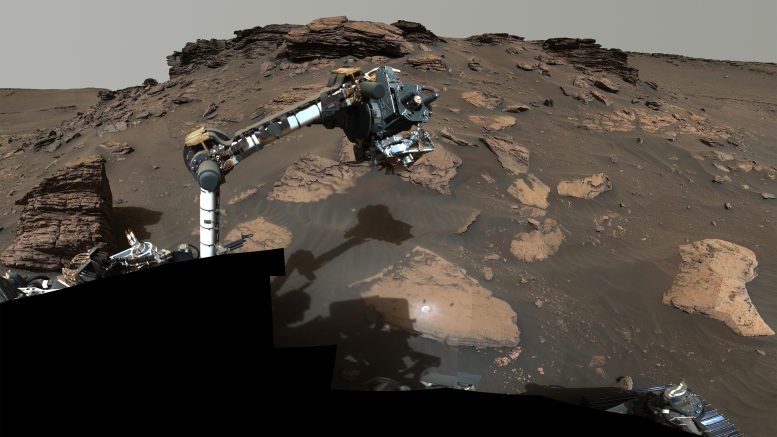
NASA’s Perseverance puts its robotic arm to work around a rocky outcrop called “Skinner Ridge” in a set of images captured in June and July 2022 by the rover’s Mastcam-Z camera system. SHERLOC is mounted on the end of the arm. Credit: NASA/JPL-Caltech/MSSS
Engineers are working to stabilize a dust cover on one of the science instrument’s cameras.
Data and imagery from NASA’s Perseverance Mars rover indicate one of two covers that keep dust from accumulating on the optics of the SHERLOC instrument remains partially open. In this position, the cover interferes with science data collection operations. Mounted on the rover’s robotic arm, SHERLOC (Scanning Habitable Environments with Raman & Luminescence for Organics and Chemicals) uses cameras, a spectrometer, and a laser to search for organic compounds and minerals that have been altered in watery environments and may be signs of past microbial life.
The mission determined on January 6 that the cover was oriented in such a position that some of its operation modes could not successfully operate. An engineering team has been investigating to determine the root cause and possible solutions. Recently, the cover partially opened. To better understand the behavior of the cover’s motor, the team has been sending commands to the instrument that alter the amount of power being fed to it.
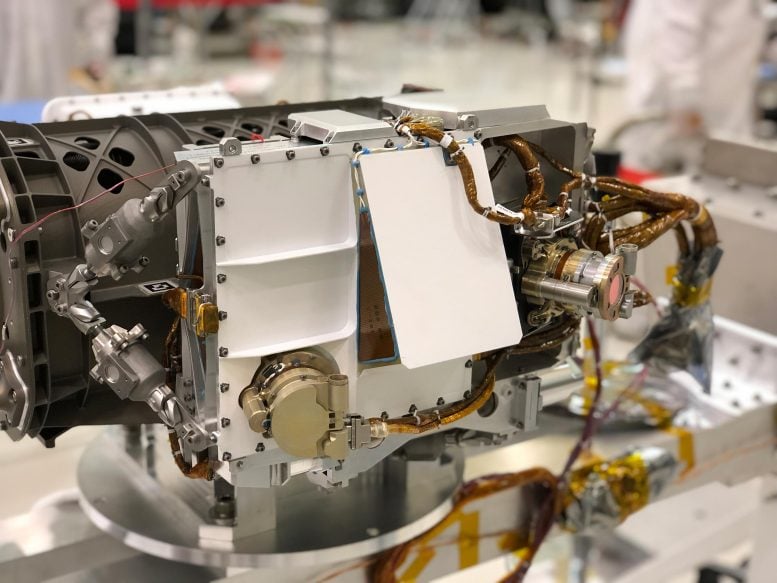
Close-up of SHERLOC: This close-up view of the SHERLOC instrument located at the end of the robotic arm on NASA’s Perseverance rover was captured prior to the rover’s launch to Mars. Credit: NASA/JPL-Caltech
With the cover in its current position, the instrument cannot use its laser on rock targets, and cannot collect spectroscopy data. However, imaging microscopy can still be acquired with WATSON, a color camera on SHERLOC used for taking close-up images of rock grains and surface textures. WATSON (Wide Angle Topographic Sensor for Operations and eNgineering) operates through a different aperture.
SHERLOC is part of a seven-instrument suite on Perseverance. During development of the mission, the team designed the instrument suite such that the rover could still achieve its science objectives should any single instrument fail, as there is some overlap among the capabilities of the instruments. Along with SHERLOC, PIXL (Planetary Instrument for X-ray Lithochemistry) and SuperCam also perform spectroscopy.
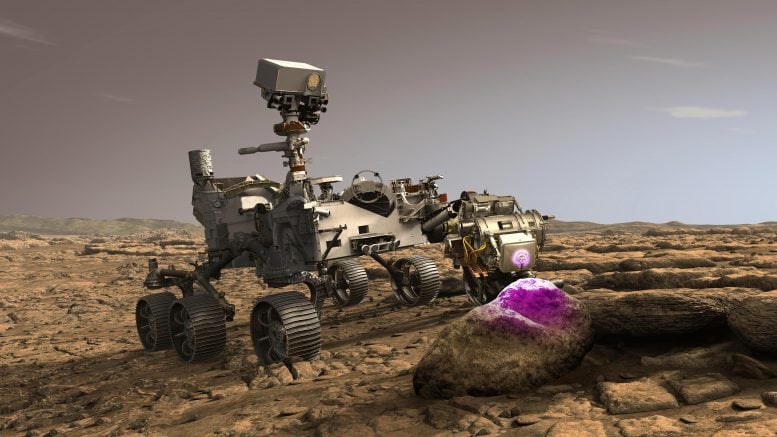
Perseverance’s PIXL at Work on Mars (Illustration): In this illustration, NASA’s Perseverance Mars rover uses the Planetary Instrument for X-ray Lithochemistry (PIXL). Located on the turret at the end of the rover’s robotic arm, the X-ray spectrometer will help search for signs of ancient microbial life in rocks. Credit: NASA/JPL-Caltech.
Currently making its way to explore an area nicknamed “Beehive Geyser,” the rover marked its 1,000th Martian day, or sol, on the Red Planet on December 12, 2023 – more than 300 sols beyond its initial prime mission. Since the rover’s landing on February 18, 2021, SHERLOC has scanned and provided rich data on 34 rock targets, creating a total of 261 hyperspectral maps of those targets. Featuring a radioisotope power system, Perseverance’s design is based on the agency’s Curiosity Mars rover, which is still going strong after more than 11 years (4,000 sols) on the Red Planet.
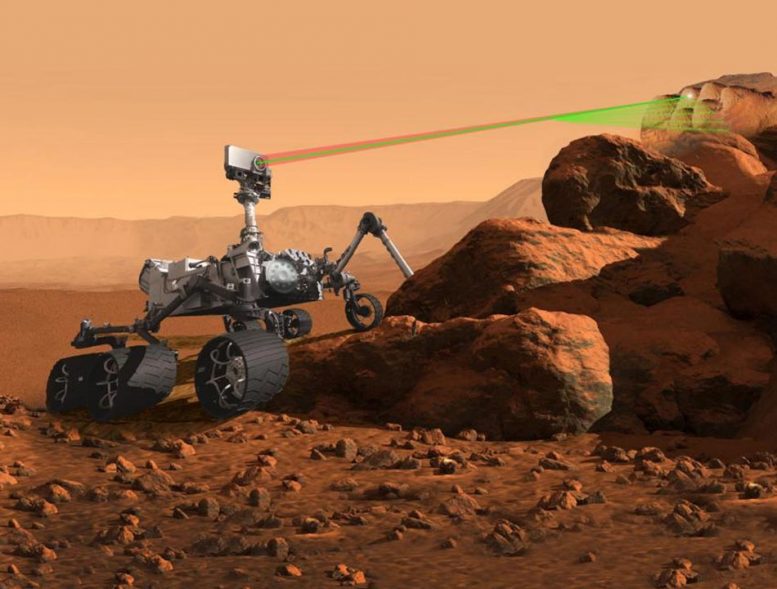
Illustration of the Mars Perseverance Rover using its SuperCam instrument to laser zap a rock in order to test what it’s made of. Credit: NASA
More About the Mission
A key objective for Perseverance’s mission on Mars is astrobiology, including the search for signs of ancient microbial life. The rover will characterize the planet’s geology and past climate, pave the way for human exploration of the Red Planet, and be the first mission to collect and cache Martian rock and regolith.
Subsequent NASA missions, in cooperation with ESA (European Space Agency), would send spacecraft to Mars to collect these sealed samples from the surface and return them to Earth for in-depth analysis.
The Mars 2020 Perseverance mission is part of NASA’s Moon to Mars exploration approach, which includes Artemis missions to the Moon that will help prepare for human exploration of the Red Planet.
JPL, which is managed for NASA by Caltech in Pasadena, California, built and manages operations of the Perseverance rover.

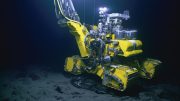





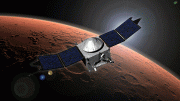

Be the first to comment on "The Mars Cover-Up: Perseverance Rover’s SHERLOC Dust Dilemma"